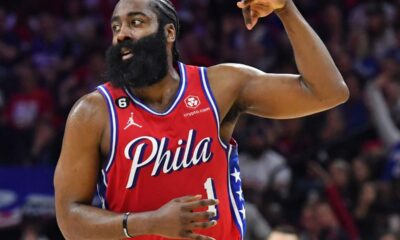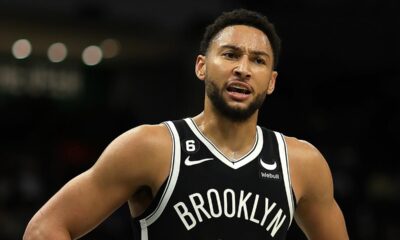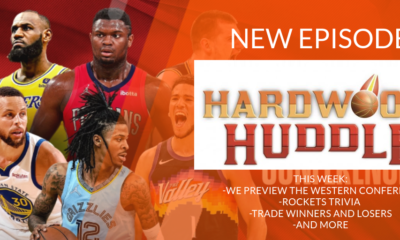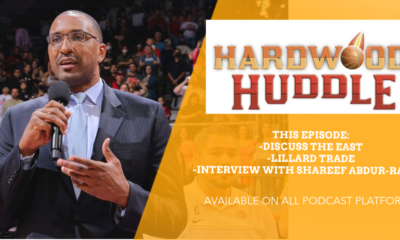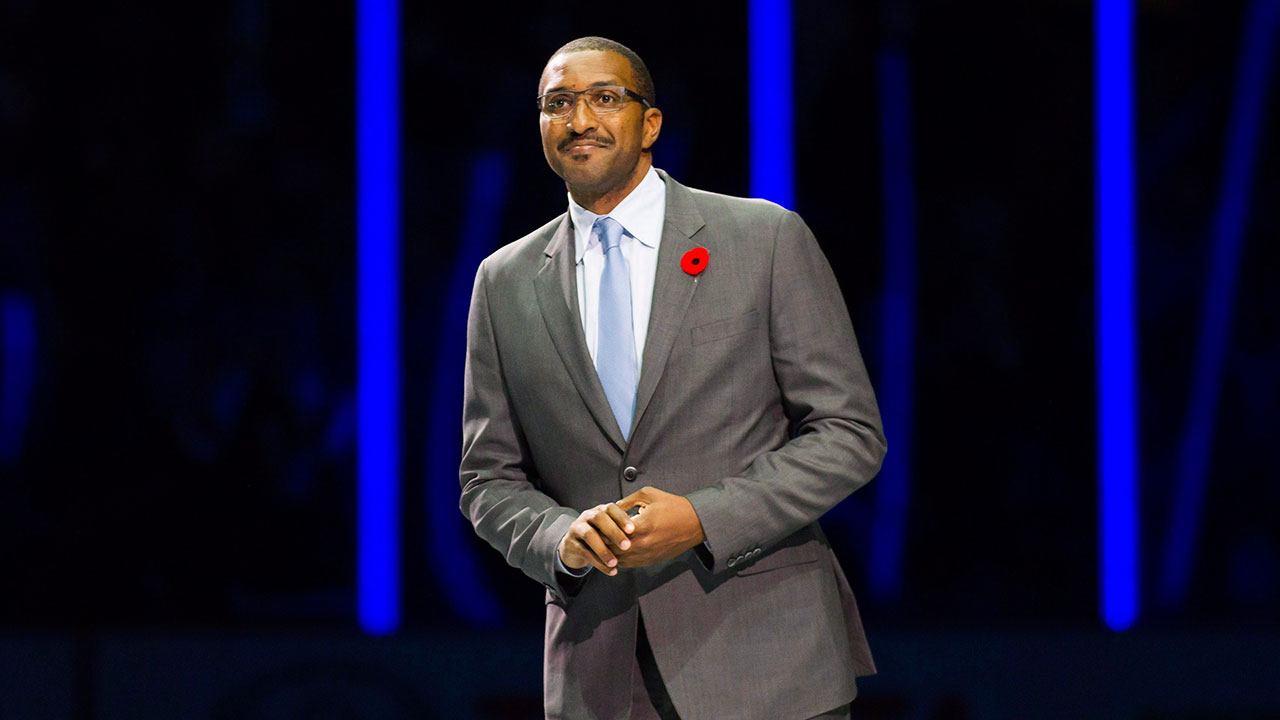
Shareef Abdur-Rahim faced more challenges than the average NBA rookie when he made the jump from college. Having spent one stellar year at UC Berkeley, Abdur-Rahim was drafted third overall by the Vancouver Grizzlies, who had only been in existence for one season at that time. They had finished their inaugural season with just 15 wins, having managed a league-low 89.8 points per game and in desperate need of everything Abdur-Rahim brought to the table.
Fast-forward 27 years and Abdur-Rahim is now serving as the president of the NBA’s G League. After playing for four NBA teams across 12 seasons, he became an assistant coach for the Sacramento Kings for two seasons, moved into their front office, served as GM for the Reno Bighorns, and then as Associate VP of Basketball Operations for the NBA. He has a wide array of experiences to share with the young men coming into the developmental league, which makes him an ideal choice to head up the program.
“I think of those couple of days leading up to the draft where you and your family are traveling to the draft, sitting in the green room, that is the culmination of a lifetime of work and sacrifice,” Abdur-Rahim tells The Hardwood Huddle. “It’s a celebration of that time and I think you should celebrate it and enjoy it and reflect. The day after that, it’s work. When you’re drafted that high you really have a responsibility to the people who believed in you and drafted you that you go and try to be the best version of yourself. You want to be great, you want to achieve and you want to have success. I was looking up my peers, my contemporaries at that time were Kevin Garnett, Antoine Walker, Allen Iverson, Stephon Marbury, Kobe Bryant – those were the guys who were drafted around the time I was, the guys I went against in high school, so you’re always trying to keep up with your peers. You also want to help your organization, and true professionals always want to keep getting better.”
Abdur-Rahim had a successful NBA career, individually, often averaging 20 points and 10 rebounds per contest, but he only made it to the playoffs once and that Sacramento Kings team lost in the first round of the 2006 postseason. It’s one thing to assemble talent, quite another to put it all together.
“It wasn’t until I retired and started working in the Kings’ front office that I started to understand just how difficult it is to put teams together,” says Abdur-Rahim. “You have to have continuity between the front office and coaches and then some of the good fortune you need in drafting players, signing players and making trades – it’s not an easy thing at all. I enjoyed my NBA experience, but if there’s one thing I could have changed I would have played on better teams. I was drafted to an expansion team and the first five years was really just us trying to get over the hump of being draft picks trying to teach each other.”
It took a while for teams across the NBA to understand and embrace the opportunity represented by the G-League, though the San Antonio Spurs didn’t take long. The Austin Toros (now Spurs, also) ran head coach Gregg Popovich’s system to enable players to more easily transition when called to make the quick trip down I-35. Now more and more teams have figured out what a valuable asset a minor league team can be.
“I think you start with just trying to educate,” Abdur-Rahim says of the G League methodology. “You try to remember when you were younger and look at the pros and cons of all of these platforms. You can tell your story and engage with people in ways you couldn’t before. Now younger players are coming in with such potential, what and how you use your G League team has become even more important. There was a time when playing in the developmental league was seen as a negative and I think the Spurs really played a big role in changing that perspective. It starts with education, examples of guys who had success, and you try to share that with younger players while still recognizing that young guys are going to make mistakes. Education is so much what our league is about, in the G League, if you need time to mature and make mistakes, you can do those things in our league and have it not always be the biggest news.”
One of the biggest issues facing modern NBA teams is how to incorporate younger and younger players who have less and less experience playing basketball on a high level into a professional system. Houston Rockets guard Jalen Green is a perfect example. There’s no denying his talent, but even after a year with the G League’s Ignite he struggled with consistency over the first two years of his career. Meanwhile, the Rockets have been among the worst teams in the league because they have a roster full of high draft picks who weren’t immediate impact players. The hope is that the G League will be part of the solution as younger players are now being seen as professionals much earlier than has ever previously been the case.
“I think what we’ve seen in the NBA, the NFL, I think in a sense everything has become professional,” says Abdur-Rahim. “Young people are able to market themselves and make money and there are pros and cons and consequences to all of that. The great thing about the G League is that a young player can come into an NBA system and grow and develop at his pace. It’s similar to the NBA game. They’re being coached, developed and prepared to be in the NBA game and be productive at his pace. The example I use, from my draft class, is Jermaine O’Neal. For his first five or six years in the league he sat on the bench in Portland. He was behind great players like Clifford Robinson, Rasheed Wallace and Dale Davis, so it wasn’t until he got to Indiana that he got a chance to really play and that was his first time playing consistently and he became an All-Star and a great, great player. Kobe Bryant took a year or two before he became a great player. I think young people should have the option to make a decision with their family and do what they think is right. In the G League we have provided an option like that for young people to come and find success with that.”
Abdur-Rahim’s personal philosophy is about the notion of paying it forward, and that drives his vision for the G League. It starts with building a winning culture, one that not only grows basketball players, but also successful young men.
“When we talk about culture we talk about people, how we treat people, how people respond to things within an environment,” says Abdur-Rahim. “We set standards that determine how players are guided and developed and nurtured on a daily basis. It’s like a living, breathing thing. We’re living and working in a professional environment, so there are some bare minimums we need from people as far as wanting to do well, wanting to be part of the group and wanting to contribute. Once you see that, you try to meet the person where they are and put resources, tools and people around them to help them grow and develop. I think that’s the great thing about the G League is that there’s a step you can take. In years past it was just college, you went to college and we knew freshman year was going to be rocky, then you worked during the summer and you would go from there. Now you have the G League, you have a system where it’s the same environment, coaches get to know what the players are about, and you can build. If there are bad habits or bad circumstances and you see that the person wants to achieve and grow then we establish the non-negotiables but also put the resources in place to help those kids grow.”
Part of those resources are designed to assure long-term success for G League players, not only in the NBA, but in life beyond the hardwood.
“For our players, and we will have 32 teams by the 2024-25 season, our players have access to the same resources as NBA players,” says Abdur-Rahim. “The players are unionized now and every team has an off-court development person to support player development, we even provide tuition reimbursement to help them with continuing education. For our younger group, the Ignite team, we provide tuition to go to college now or in the future and we spend a lot of time with them on the business of sports, financial literacy, media training, and community engagement. We have a whole curriculum for those younger players who are college age. We take it extremely seriously. I’m a firm believer in not only growing basketball players, but first you help the person grow and that process, speaking from personal experience, doesn’t stop. Who you are at 19 isn’t who you’re going to be at 25, or shouldn’t be, and that person isn’t who you are at 30 and so on. We want to be a part of that complete journey.”
Successful journeys begin with the right person leading the way, and retired All-Star Shareef Abdur-Rahim has the right mindset and experience to guide the G League as it seeks to prepare young players for the NBA’s big stage. The league has grown exponentially in popularity, and under Abdur-Rahim’s careful guidance we expect even more big things.
Bill Ingram is Executive Editor for The Hardwood Huddle, a new website coming soon from the creators of Back Sports Page. Bill has covered the NBA for more than 20 years.
From The Hardwood Huddle:
The Boston Celtics aren’t the first team to see Kristaps Porzingis as a potential championship harbinger, but so far the talented big man has failed to deliver the trophy. Can he do it this time around, or might Boston be the last team willing to invest in KP’s potential?
The 2023-24 NBA season promises to bring significant changes to the balance of power in the Western Conference. While the defending NBA champion Denver Nuggets and Los Angeles Lakers have garnered the most attention, there is A Surprising Contender Rising in the West.
The Boston Celtics made a big splash by signing Jaylen Brown to an historic contract over the summer. It’s a move they almost had to make, despite the fact that the duo of Jayson Tatum and Brown has failed to yield a championship for the team. Facing another season of doing the same things and expecting a different result has the Celtics Caught Between a Rock and a Hard Place.
When Philadelphia 76ers GM Daryl Morey brought James Harden back into the fold, he invited his new team down the same path that led to him stepping down from his last one. Now The James Harden Train Wreck Has Left the Station, and it may cost the Sixers Joel Embiid and Morey his job.
The Dallas Mavericks’ front office continues to build a team that even Mavs Fans For Life (MFFL) will have a hard time loving. Only an unprecedented season from the enigmatic Kyrie Irving can save them. Dallas Mavericks Betting on Kyrie Cryptocurrency.
Throughout the rebuilding process, New Orleans Pelicans GM David Griffin has made all the right moves. Nonetheless, the team is set to face another long season of disappointment. From the front office to the coaching staff, the players and the fans, the Pelicans Do Not Deserve Their Fate.
Related

Featured Articles
-
MMA
/ 47 mins agoUFC 300: Holloway Sends His Blessings
When Max Holloway decisively lost his third fight against Alexander Volkanovski, his championship aspirations...
By Brandon Li -
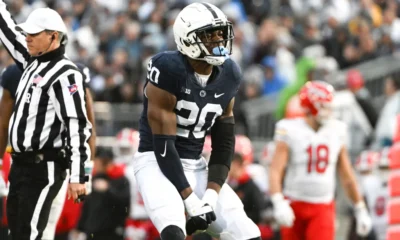

College Football
/ 15 hours agoNFL Draft 2024 Scouting Report: Adisa Isaac, Edge, Penn State – Baltimore Ravens
Drafted by: Baltimore Ravens Height: 6’4” Weight: 247 Arm Length: 33 ⅞ ...
-
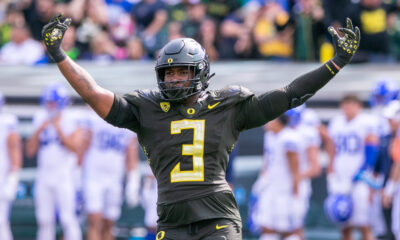

College Football
/ 16 hours agoNFL Draft 2024 Scouting Report: Brandon Dorlus, DL, Oregon – Atlanta Falcons
Drafted by: Atlanta Falcons Height: 6’3” Weight: 283 Arm Length: 33 ¼ ...
-
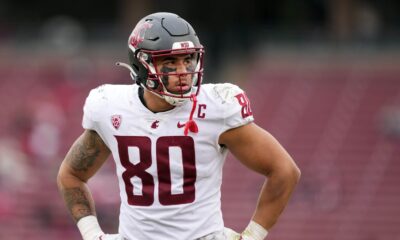

College Football
/ 16 hours agoNFL Draft 2024 Scouting Report: Brennan Jackson, Edge, Washington State – LA Rams
Drafted by: LA Rams Height: 6’4” Weight: 264 Arm Length: 32 ¾ ...
